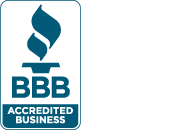Information Your Nonprofit Donor Database Needs to Capture
Whether you are a small nonprofit working in an excel spreadsheet or a larger development team with a robust CRM, every 501(c)(3) organization needs a nonprofit donor database to capture information. There is a saying, “Garbage in means garbage out,” relating to the database. If good data is not going into the system, pulling good details out when needed becomes impossible. You want to incorporate the best nonprofit donor management practices to capture accurate, timely information that reflects your donors and what they care about. This attention to detail will help build solid relationships with your donors over time and create long-term sustainability as your development team grows and changes throughout the years.
What Your Nonprofit Donor Database Needs to Include
1. Address, Gift Date, and Amount
It should go without saying, but if you capture nothing else in your database, be sure you get your donor’s mailing address, donation amount, and the date they donated. For any donation over $250, you legally must send a donation receipt to your donor. Still, the best nonprofit donor management practice is to send an acknowledgment letter to every donor regardless of the gift amount. The IRS’s basic requirements state the donor’s name, the amount given, and the date of the gift must be in the letter. This can be done in the body of the letter or placed in the footer with any state-required disclosures.
2. Email Addresses
Solicitations are being done over email more and more these days as the prices of stamps rise and donors increasingly prefer more environmentally friendly practices. Without a robust email list in your nonprofit donor database, it will be harder to get your donor’s attention and promptly get information in front of your supporters. In addition, email addresses are convenient for an emergency when you can wind up at the top of your donor’s daily inbox with a few clicks. Do not forget to ask for this on your online donation forms or printed envelopes!

3. Name Preferences
Personalization is key! No one wants to be addressed as “Dear Friend.” Your donors have made it a point to get to know your organization and send you some of their hard-earned money. Make it a point to understand how your donors prefer to be addressed when you send out an appeals letter. Do they go by William, or would they rather you call them Bill? Do they only want to be addressed as Mrs. Smith? These are all critical questions to ask your donors, and make sure your nonprofit donor database reflects these preferences.
4. Campaign
You recently received a donation in the mail, but what did the donor intend for that gift? Is it meant to go toward scholarships, operating costs, or purchasing supplies for the food pantry? Some donors will give unrestricted, general operating gifts, but if a donor makes a gift toward a specific campaign, note it in your database. Not only will this nonprofit donor management practice help with your future program budgeting and potential grant requests, but it will also give you the ability to steward your donors in the future. Knowing what campaign your donor invested in, you can provide them with more detailed impact reports on the parts of your program they care about most.
5. Personal Interests and Information
If your nonprofit’s donor database has the space, collect information on your donors’ interests, hobbies, political leanings, and businesses. Compiling this information can help pinpoint which of your organization’s projects or programs a donor might be interested in and help you tailor an ask toward something they might have a deeper connection with. More personalized information can also help determine which of your development team members might better connect with a donor to foster that relationship toward life-long giving.
There is such a thing as too much information, and you’ll need to put aside time to make sure your nonprofit’s donor database is kept current and accurate, but finding that sweet spot will lead to long-term, fruitful donor relations. The beginning of the year is a great time to discuss what is most important to your organization with your board or development team. So much information can be captured in a donor database, and it is never too late to start making some adjustments in your data collection policies!
BryteBridge offers an entire team of nonprofit professionals experienced in fundraising and nonprofit donor management. We can help you with everything from technical to financial details and achieving your strategic plans. Contact us today to learn more about our services!

Written by Caitlyn Cawthon
Caitlyn Cawthon is a Certified Nonprofit Professional with 10 years of development experience. She has worked in social services, as well as with a rare disorder nonprofit. Caitlyn graduated from the University of Central Florida (Go Knights!) with a BA in history and a minor in nonprofit management. She is passionate about fundraising, especially direct mail, special events, and database management, and loves helping nonprofits start their giving programs.



